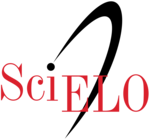Submissions
Submission Preparation Checklist
As part of the submission process, authors are required to check off their submission's compliance with all of the following items, and submissions may be returned to authors that do not adhere to these guidelines.- La petición no ha sido publicada previamente, ni se ha presentado a otra revista (o se ha proporcionado una explicación en Comentarios al editor).
- El archivo enviado está en formato OpenOffice, Microsoft Word, RTF, o pdf
- Se han añadido direcciones web para las referencias donde ha sido posible.
- El texto tiene interlineado simple; el tamaño de fuente es 12 puntos; se usa cursiva en vez de subrayado (exceptuando las direcciones URL); y todas las ilustraciones, figuras y tablas están dentro del texto en el sitio que les corresponde y no al final del todo.
- El texto cumple con los requisitos bibliográficos y de estilo indicados en las Normas para autoras/es, que se pueden encontrar en Acerca de la revista.
- Si esta enviando a una sección de la revista que se revisa por pares, tiene que asegurase que las instrucciones en Asegurando de una revisión a ciegas) han sido seguidas.
Artículos
Studies and bibliographic reviews
Copyright Notice
Los autores que publican en esta revista están de acuerdo con los siguientes términos:
- Los autores conservan los derechos de autor y garantizan a la revista el derecho de ser la primera en publicarlo.
- Los contenidos de esta revista se distribuyen bajo una Licencia Creative Commons Atribución-NoComercial-CompartirIgual 4.0 Internacional que permite a autores y lectores compartir el trabajo y realizar obras derivadas con un reconocimiento de la autoría, de manera no comercial y siempre que se esa nueva obra en los mismos términos de la licencia.
- Los autores pueden establecer por separado acuerdos adicionales para la distribución no exclusiva de la versión de la obra publicada en la revista (por ejemplo, situarlo en un repositorio institucional o publicarlo en un libro), con un reconocimiento de su publicación inicial en esta revista.
- Se permite y se anima a los autores a difundir sus trabajos electrónicamente (por ejemplo, en repositorios institucionales o en su propio sitio web) antes y durante el proceso de envío, ya que puede dar lugar a intercambios productivos, así como a una citación más temprana y mayor de los trabajos publicados
- Esta revista proporciona un acceso abierto inmediato a su contenido, basado en el principio de ofrecer al público un acceso libre a las investigaciones que permite que cualquier usuario lea, descargue, copie, distribuya, imprima, busque o vincule los textos completos de los artículos, los rastree para indexarlos, pasarlos como datos al software o usarlos para cualquier otro propósito legal.
- Para el envío, procesamiento y la publicación de artículos en esta revista no se requiere el pago de ningún cargo
Privacy Statement
Los nombres y las direcciones de correo electrónico introducidos en esta revista se usarán exclusivamente para los fines establecidos en ella y no se proporcionarán a terceros o para su uso con otros fines.
























